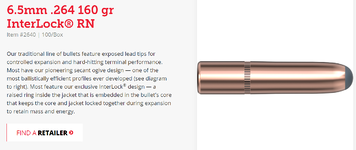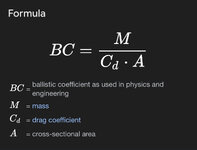Generations of timber hunters would disagree. Jumping elk in the timber, which are quickly moving away from you in any number of extreme angles, has been a popular place for 175 gr 7mm, 200 gr 30 cal, and 225/250 gr 338/35 cal, because they work.
Apparently during rifle season all the talk seems to be focused on shooting past 500 yards, like all the fun videos show. It’s like timber hunting doesn’t work - why would someone hunt timber and not be able to use a dope card or bipod. Crazy right. An all around hunter should be able to kill something from 25 yards to as far as they can shoot and judge wind. I’ve wondered how many new hunters walk right by big benches loaded with elk on their way to a high vantage point to glass for the same elk when they come out to feed.
The man who only owns a hammer thinks everything is a nail. It may not be elk 101, or long range elk shooting, but a well rounded elk hunter will be well served to learn timber hunting and have a rifle setup that can hammer a running elk at a bad angle at 25 yards or standing in a meadow at 500 yards like a Hornady advertisement.
Internet hunting is operating normally. Carry on. *chuckle*
I really appreciate this perspective—timber hunting is an art form, and it’s great to see it getting some well-deserved respect in the conversation. I’ve always loved still hunting myself, and until two years ago, my longest shot on an animal was a coyote at 200m, despite the fact that I regularly practice out to 1,000m. For me, the joy of hunting has always been more about the stalk and the challenge of getting close than setting up for long-range shots.
My personal favorite cartridge and action type is the .45-70 in a lever gun. There’s just something about the history, simplicity, and effectiveness of that setup that keeps drawing me back. I’ve taken bears with it in the spring and deer in the fall, and it’s my go-to when I’m still hunting in thick timber or brush. But I also enjoy experimenting and learning, which is why I’ve branched out into smaller, faster cartridges like the 22 Creedmoor. I love seeing how different tools perform in the field, and it’s taught me a lot about the versatility of modern bullet and cartridge designs.
As for your analogy about the hammer and the nail, I’d argue that a frangible .224 is more like a well-equipped toolbox—it gives you the flexibility to handle a variety of situations, from 80 yards to 800. A bigger caliber or magnum cartridge can feel more like the hammer, where everything is a nail, because while they’re undeniably effective at certain tasks, they lack the adaptability of a smaller, faster bullet in a broader range of scenarios.
That said, I absolutely respect the point about having a setup that can handle everything from a 25-yard shot at a running elk to a standing shot in a meadow at 500 yards. A well-rounded elk hunter should be prepared for all scenarios and I'd suggest based on my own experience and the pages of evidence here that the CORRECT small bullet will work just fine without the recoil. The beauty of hunting is that there’s no one-size-fits-all approach, and what works for one person might be completely different for someone else. At the end of the day, it’s about finding what works best for you, your style, and the conditions you hunt in. That's the art of it - the science seems to suggest you can save your shoulder, spot your shots, and put meat on the table. If you want to shoot 900-1100 better go big - real big. And even if I can regularly practice, that's a longer shot than I'm likely to make.
Thanks for sharing your thoughts—this is exactly the kind of discussion that keeps hunting interesting for me!




